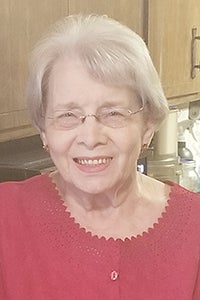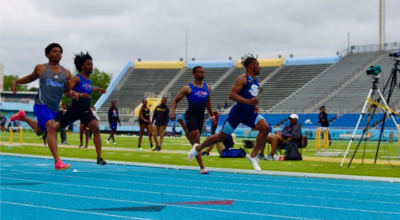Breland: Country barbering almost forgotten
Published 12:11 pm Friday, August 19, 2022

- Bob Ann Breland
|
Getting your Trinity Audio player ready...
|
It was a long time ago, but many may remember — visiting a neighbor to get a haircut for a boy or man. The barber stood behind a customer sitting in front of him in an old-time straight chair, draped with a large cloth around their shoulders. He snipped their hair and when finished, he took the cloth away and gave it a fast shake to remove the clipped hair.
Back in the 1940s and 50s, every neighborhood had its own barber and in the country, he didn’t operate from a neat shop with a striped pole out front. The country barber had little or no barber training except what he received on the job and a natural talent for shaping hair.
He usually cut hair at his home and was available any time of the day or night for the 25 cents or so he collected per customer. Saturday was usually a busy day.
If the weather was right, his barbershop was likely on the front porch. If it was cold, it was inside the house.
I don’t know how each one got into the barbering business, since they were not graduates of any barbering college. I suspect many started cutting the hair of their sons and soon his work expanded. It wasn’t usually his primary business — some were farmers. Cutting hair was just a sideline.
Particularly in the 1940s, times were pretty hard for just about everybody. It was right after World War II and while 25 cents for each haircut sounds like such a small amount to pay, if you didn’t have it, it was a lot. The barbering business was actually pretty good. Nobody let their boys go without a haircut. It just wasn’t done.
The only problem with the country neighborhood barbers was that in some cases, every customer had exactly the same haircut. The style would identify the barber. Some of these barbers were better than others, and those who did the best job got most of the business.
There were jokes about some of these “homemade” haircuts, where supposedly the barber put a bowl on the customer’s head and cut the hair around it, causing a particular style that became known as a “bowl” haircut.
Another reason these community barbers became so popular was the expense involved in going to Bogalusa or Franklinton. There the nearest “real” barbers would give shaves and haircuts and the cost could be considerable for the time. Whereas a customer would have to pay $1 for a haircut in town, he could get one for a fourth the price from a neighborhood barber.
Although gas was very cheap to our modern way of thinking, a lot of people didn’t have cars. So walking to the nearest country barber or hitching a ride with a neighbor was the way to go.
Girls did almost the same thing. Find a lady friend who was good at cutting hair and get a trim. My mother trimmed many neighborhood heads in her time and put in perms, but she never charged.
Gradually, things became better economically, people started going to “town” for more stylish haircuts and the amateur barbers gradually became a part of the past.
Country barbering — a Washington Parish custom now gone and almost forgotten.
Retired as Associate News Editor, Bob Ann Breland writes a weekly column for The Daily News. You can email her at bobann70@att.net.




